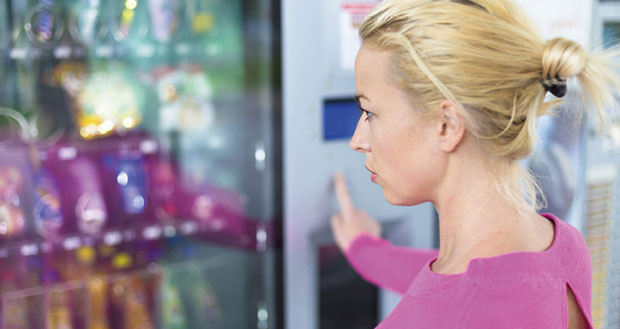David Llewellyn, Chief Executive of the Vending & Automated Retail Association (the AVA), discusses the rise in automated vending across the workplace and how it supports the hybrid workplace
With hybrid working now common practice within most businesses, facilities managers have been adapting how they run the office to suit the needs of occupants. This has included changing cleaning schedules and managing front of house shifts to match occupancy.
Another introduction is the use of automated vending and micro-markets. Across the UK, there is almost half a million vending machines and this figure continues to grow. Vending machines grant FMs greater flexibility and reduce catering costs while still providing fresh, high-quality food and beverage offerings.
HOW HAS THE VENDING MACHINE CHANGED?
The COVID-19 pandemic saw a rise in demand for on-the-go retail options that didn’t require human interaction. Since then, investment in automated and 24/7 retail has grown. In response, vending operators are constantly innovating and improving their offerings to meet the evolving demands of customers and businesses.
According to the most recent AVA Census, coffee-to-go products rose by six per cent in 2022, with the anticipated 2023 census likely to show a greater rise in demand. Additionally, coffee-to-go revenue grew by 13 per cent compared to 2020.
Today’s vending machines go far beyond the simple chocolate bar and packet of crisps. Technological advancements have introduced the capabilities for higher quality products to suit consumer needs. Many coffee-to-go machines now offer exclusively bean-to-cup coffee with fresh milk that can be hot cold, or steamed to the customers preferences, with different payment options to be as accessible as possible to the customer. The AVA Census found that cashless payments are available at 65 per cent of vending and automated retail outlets, with 72 per cent of payments at these stations being cashless compared to 34 per cent in 2017.
For FMs with catering and refreshment services as part of their role, it is important to ensure that they are providing the right refreshments that people want. One way that many locations have been able to do this successfully is through the introduction of unattended retail facilities, including micro-markets. According to the AVA Census, there are now 480 micro-markets in the UK, with 70 more installed in 2022 and a growth trajectory of 17 per cent.
EMERGING TECHNOLOGY
The micro-market serves as a quick and straightforward system whereby customers can choose what product they want from the shelves and pay on exit at a cashless payment kiosk. Many businesses are looking to adopt micro-markets into the workplace to make the workplace a more attractive place to be, and to encourage the return to office-based working. Micro-markets allow this, enabling businesses to continue the flexibility that so many employees want, aiding employee retention, while reducing additional costs associated with a fully staffed ‘traditional’ canteen.
While conversation in the FM industry has been heavily focused on artificial intelligence and machine learning, we can expect that micro-markets will utilise other emerging technologies. This will likely pave the way for further developments within micro-markets and vending, providing the ability to monitor consumer behaviour to inform stock or prices of certain products and curate the best stock program in alignment with occupancy data to ensure occupants always have access to products without loss of revenue or food waste.
AVA Census found that operators are now collecting customer choice data, with almost 75 per cent of machines being ‘connected’ using either telemetry or handheld devices, up from 45 per cent last year. This data collection, which can be shared with FMs, tells us what consumers are buying, at what time, day, and at what frequency. Having access to this information enables FMs to react quickly when something is low on stock and ensure favourites are always available.
The vending sector is futureproofing and prepared to meet changing consumer behaviour surrounding contactless payments. The adoption of cashless and operational management systems has increased significantly in recent years, partly due to the pandemic, and the continued commercial growth of the market. Implementing this successfully will help businesses to reduce overall costs, while ensuring their employees have refreshments on the go.
FLEXIBLE STOCKING
With flexible working comes flexible stocking, which creates an efficient and reliable system. Not only are consumers looking for higher-quality products, but there is also a rising demand for healthier food and drinks. Should FMs not cater towards the changing preferences of consumers, they risk alienating clientele, and occupants may be less likely to attend the office as a result.
FMs can utilise vending to respond to the changing needs of occupants, creating a competitive advantage that offers more convenience than the high street. The use of automated retail and vending is bringing great benefits and offers occupants a range of food and beverage options that reflect their preferences and dietary requirements. Making those needs accessible and easily managed through the use of automated vending and retail makes the lives of FMs easier and creates a harmonious partnership that can continually adapt in line with office occupancy.





